Fuerteventura, one of the Canary Islands, is a great place for bird lovers and surfing enthusiasts. In March 2024, I had the opportunity to spend a week there, discovering not only charming beaches and picturesque landscapes but also the richness of the Canary Islands’ avifauna. This is a place that attracts not only tourists seeking sun but also birdwatching enthusiasts from all over the world. In this article, you will find practical tips on organising such a trip, information about the best birdwatching spots, and an overview of the most interesting attractions that this extraordinary island has to offer. Enjoy reading!
- Fuerteventura – Information About the Island
- Nature on the Windy Island
- Fuerteventura – rocky deserts and beautiful coastlines
- Birds on Fuerteventura
- Trip organization
- Complete list of sightings
- Trip summary
- Useful tips
Raport z wyprawy dostępny jest również w języku polskim
Fuerteventura – w poszukiwaniu kanaryjskich ptaków

Fuerteventura – Information About the Island
Fuerteventura is the second-largest island in the Canary Islands archipelago, located in the Atlantic Ocean, just 100 km off the coast of Africa. Administratively, it belongs to Spain and is part of the Canary Islands’ autonomous region. Although geographically part of Africa, the islands are within the European Union, which significantly simplifies trip planning for European tourists.
Its volcanic landscapes, rugged mountains, sandy dunes, and expansive beaches make it particularly attractive to visitors. The island is known for its numerous nature reserves, such as the Parque Natural de Corralejo with its impressive dunes, and the picturesque Jandía Peninsula, where you can encounter rare bird species and extraordinary wilderness.

The history of Fuerteventura dates back to ancient times when it was inhabited by the indigenous Guanche people. In the 15th century, the island was conquered by the Spanish, marking the beginning of its incorporation into the Spanish crown. Today, Fuerteventura is a popular tourist destination, especially for those seeking tranquility, beautiful beaches, and unique conditions for water sports like kitesurfing and windsurfing. Interestingly, Fuerteventura and its marine habitat have been recognized by UNESCO as a Biosphere Reserve, highlighting its importance for the conservation of biodiversity.
Weather on Fuerteventura
Fuerteventura is characterized by a mild, dry climate typical of the Canary Islands, making it an ideal destination to visit year-round. The island’s temperatures are relatively stable, with slight variations between summer and winter. During the summer months, from June to September, average temperatures range between 26-30°C. However, thanks to the constant, cooling ocean breezes, the heat is more manageable compared to many other regions with a similar climate.
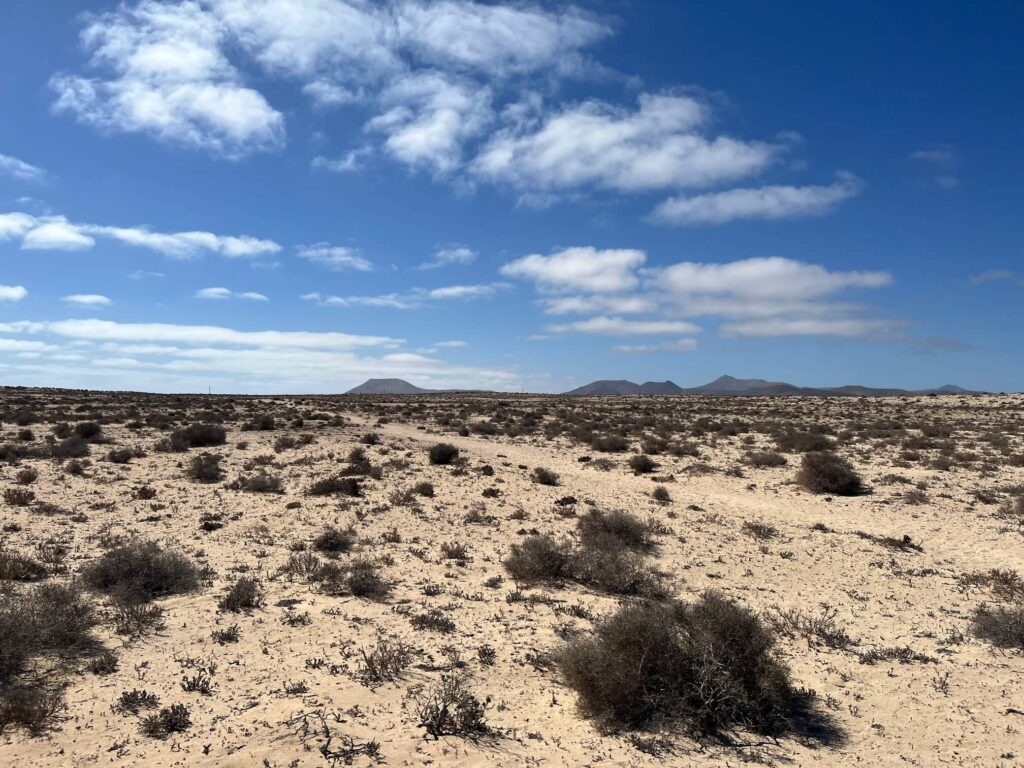
Winters on Fuerteventura are mild, with average temperatures ranging between 18-22°C, making it an excellent escape for those looking to avoid the cold of the European winter. Rain is rare, and when it does occur, it’s mainly between October and March. The island receives low annual rainfall, often below 150 mm, which contributes to its dry, desert-like landscape.
The constant trade winds, known as “trade winds,” are a distinctive weather conditions of Fuerteventura. These winds make the island a paradise for water sports enthusiasts, such as kitesurfing and windsurfing. During the summer, these winds can be quite strong, which may affect the perceived temperature and the comfort of tourists while sunbathing.

The sun shines here most days of the year, with over 300 sunny days annually, making high SPF sunscreen absolutely essential. Additionally, the dry climate results in lower humidity, which can be beneficial for those who struggle with humid conditions. These are ideal conditions for photographers and tourists seeking sunny weather and beautiful beaches.
Nature on the Windy Island
I organized a trip to the Spanish island to escape the dreary March weather and to add a few new species to my life list of observed birds. The warm climate and beautiful sandy beaches were what attracted my wife, while I focused on scanning the skies for exotic birds. However, there was plenty to observe on the ground as well.





Due to the island’s location and its unique, dry climate, Fuerteventura is home to many bird species that have adapted to the harsh environmental conditions. One of the most distinctive birds of Fuerteventura and the main focus of this trip is the Saharan hubara (Chlamydotis undulata), a symbol of the island and a rare and endangered species primarily inhabiting desert and semi-desert areas.
The Canary Islands also host several endemics such as the Fuerteventura Stonechat, the Berthelot’s pipit, the Bolle’s pigeon, the Tenerife blue chaffinch, the Atlantic canary, and the African blue tit. Knowing that the chaffinch, pigeon, and canary are typically found on Tenerife, I hoped to at least find one of these species during my visit.
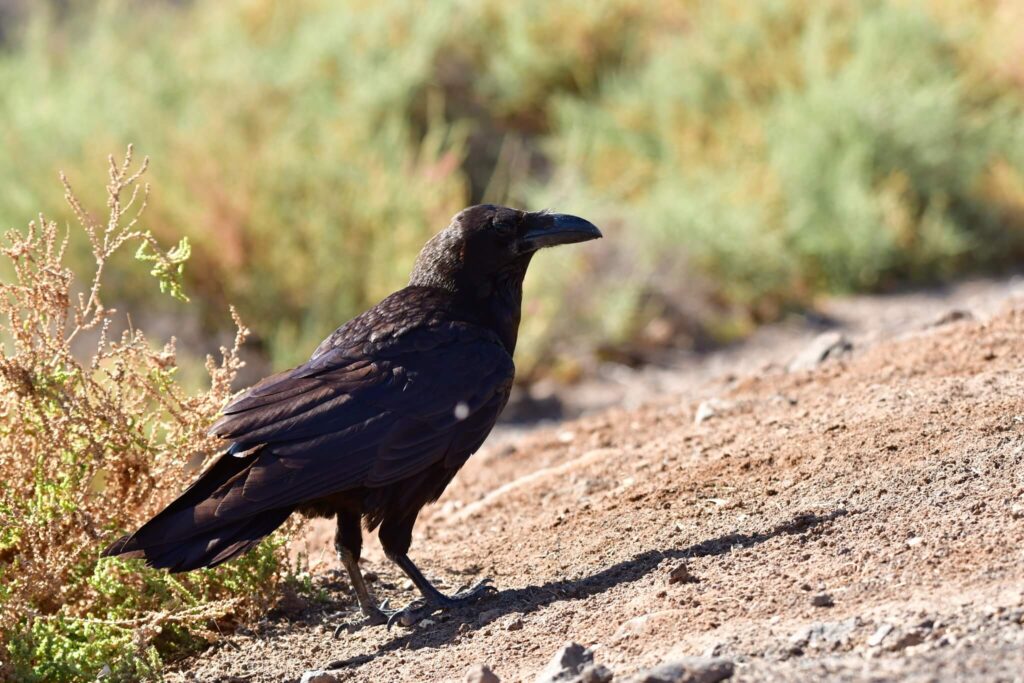

Fuerteventura – rocky deserts and beautiful coastlines
The landscape of Fuerteventura is both rugged and extraordinarily picturesque, giving the island its unique character. Vast sandy beaches stretching along the coast contrast with the dry, desert plains that dominate the island’s central region. Although Fuerteventura is less mountainous than other islands in the archipelago, it features numerous hills and elevations that add variety to its scenery.
One of the most distinctive features of the landscape is the enormous dunes, particularly around Corralejo in the northeastern part of the island. These massive sandy areas, reminiscent of the Sahara Desert, create a stunning view and are ideal for long walks, enjoying sunrises and sunsets, and observing the unique wildlife.

Volcanoes of Fuerteventura
Fuerteventura, like the other Canary Islands, has a volcanic origin, though the volcanoes on the island have been dormant for millions of years. Nonetheless, their remnants continue to shape the island’s landscape. Volcanic cones, lava fields, and basalt rock formations bear witness to the past geological activity that played a crucial role in shaping Fuerteventura’s terrain.
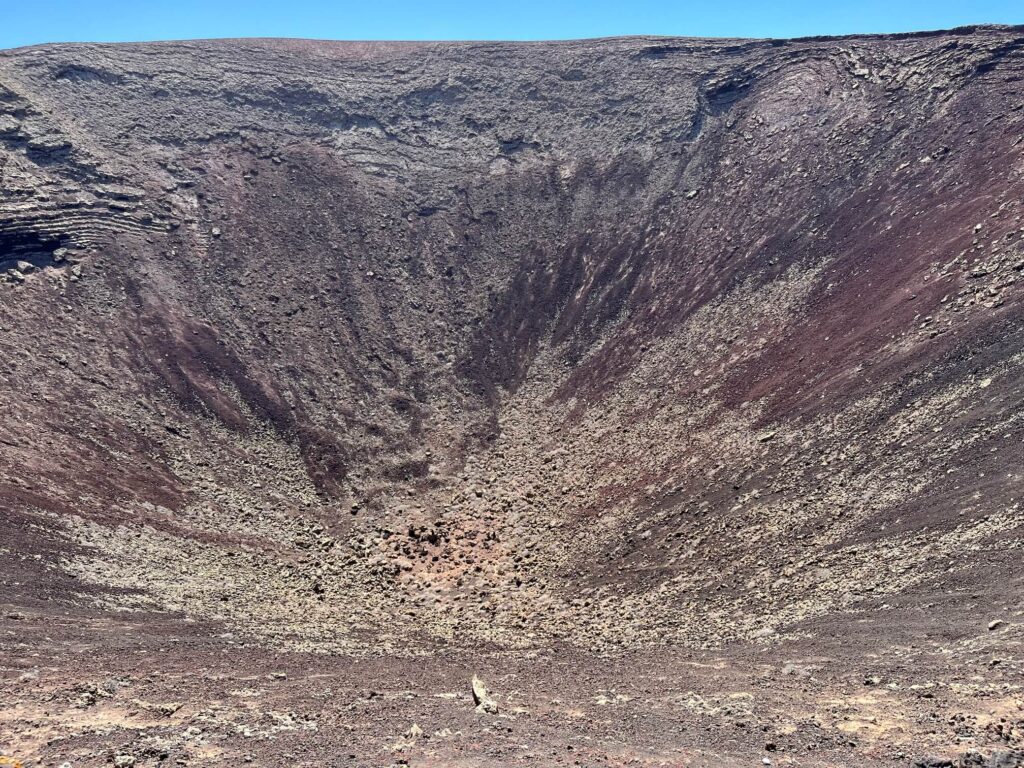
One of the most well-known volcanic features on the island is Calderón Hondo, located near the town of Lajares. This well-preserved volcanic cone offers stunning views of the surrounding areas and nearby islands, such as Lanzarote. Visitors can climb to its summit to peer into the crater and enjoy panoramic vistas. Naturally, we did that too ?.
Trip organization
Initially, we planned to take the easy route and use one of the many excursions to Fuerteventura offered by travel agencies. However, we decided that we wanted to be more mobile to explore the entire island, so we split our stay between the southern and northern ends of the island. I booked the flights and hotels myself. I’m not sure if the savings compared to package deals from travel agencies were worth the time I spent researching, but splitting the stay between two locations was definitely a good idea.




Esquinzo
We spent the first few days on the island in the small town of Esquinzo in the south. We managed to book a two-story apartment with a terrace overlooking the ocean. Additionally, the beautiful sandy beach on the eastern side of the island was about 200 meters away. This allowed us to enjoy wonderful sunrises, and the wind on this side of the island was not as strong as in other parts.
Moreover, Esquinzo was a great base for exploration. During our stay, we went to watch the sunset at the famous Playa de Cofete, explored the tourist town of Morro Jable, and visited the Oasis Park zoo located near the town of La Lajita.



We spent the second part of our vacation in a much windier part of the island. We traveled from the south to the north, heading to the town of Corralejo. Along the way, we stopped at several interesting places. First, we visited the desert area near La Pared in an unsuccessful search for the cream-colored courser. Next, we visited some fantastic viewpoints offering views of truly Martian landscapes. Our final stop on the route was Ajuy, where we admired the charming cliffs and caves that were supposedly once frequented by pirates. I looked under a few rocks, but unfortunately, I didn’t find any treasure ?.
Corralejo
Corralejo is a small town from which you can see the nearby islands of Lanzarote and the uninhabited Lobos, which is entirely a National Park. Our choice of accommodation was also favourable, we booked a cozy apartment just 30 meters from the town’s central promenade, restaurants, and numerous shops. Additionally, the gentleman managing the apartment turned out to be incredibly helpful, giving us several useful tips and even a substantial discount on a dolphin-watching cruise.
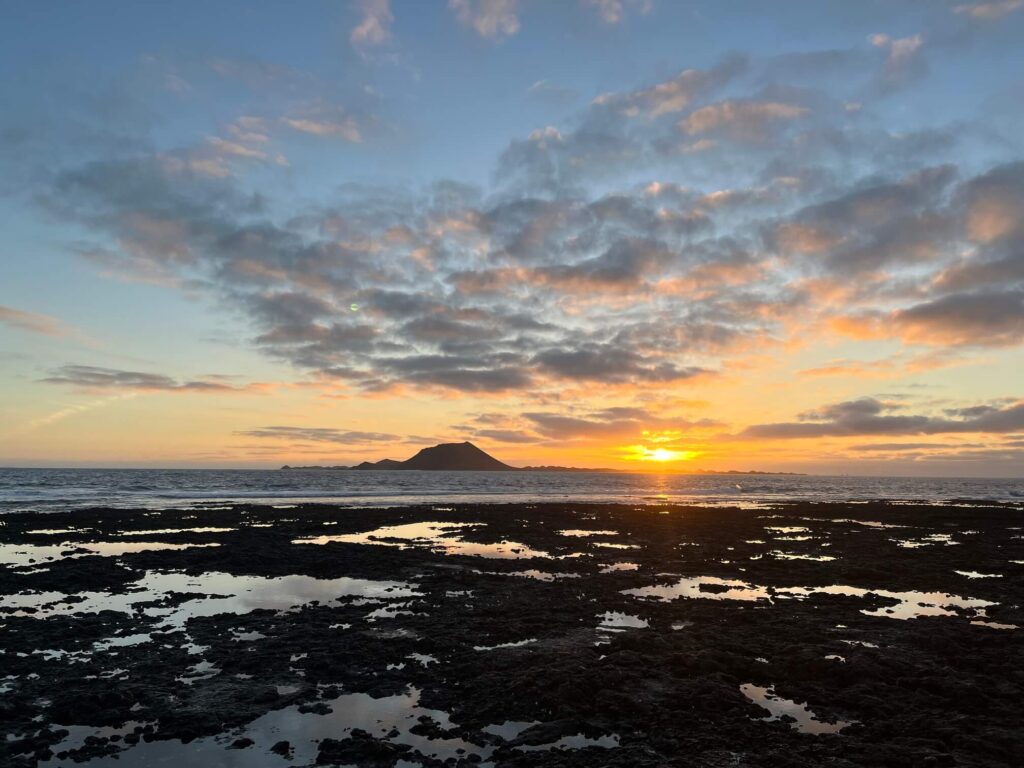
Corralejo also served as our base for exploration. From there, we ventured out to explore the nearby Parque Natural de Corralejo, climbed to the summit of the Calderón Hondo volcano, searched for desert birds in Llanos de Tindaya, and visited the tiny village of Los Molinos, where I received a hint that there are breeding griffon vultures to observe nearby.
Carnival in Corralejo
One of the biggest and most unexpected attractions turned out to be the Carnival in Corralejo. One day, as we were returning from an excursion outside the town, we noticed that most of the roads into the town were blocked. Entering via the only available route, we saw crowds of people in costumes. The center was very crowded, with music, singing, and laughter coming from every direction. CARNIVAL! After a quick shower at the apartment, we joined the lively party that went on late into the night.
Loud, upbeat music, smiling and friendly people, amusing costumes, and pure joy. We got an unexpected, wonderful bonus to what was already a fantastic trip ?. What particularly caught my attention was that by the next morning, after the grand party, there was practically no trace of it. I woke up shortly after dawn the day after the carnival to photograph seabirds, and when I stepped out of the apartment, the cleaning crews were already finishing up.
Dolphin Watching Cruise
With the discount offered by our apartment’s manager, we decided to take a dolphin-watching cruise. In the early morning, we set out with an international group on a large boat into the open ocean. We were lucky, as dolphins appeared very quickly and in large numbers. For a good 1.5 hours, we observed a sizable pod that seemed completely unconcerned with the presence of our boat. Unfortunately, the dolphins were focused on hunting rather than playing, so none of them leaped out of the water.
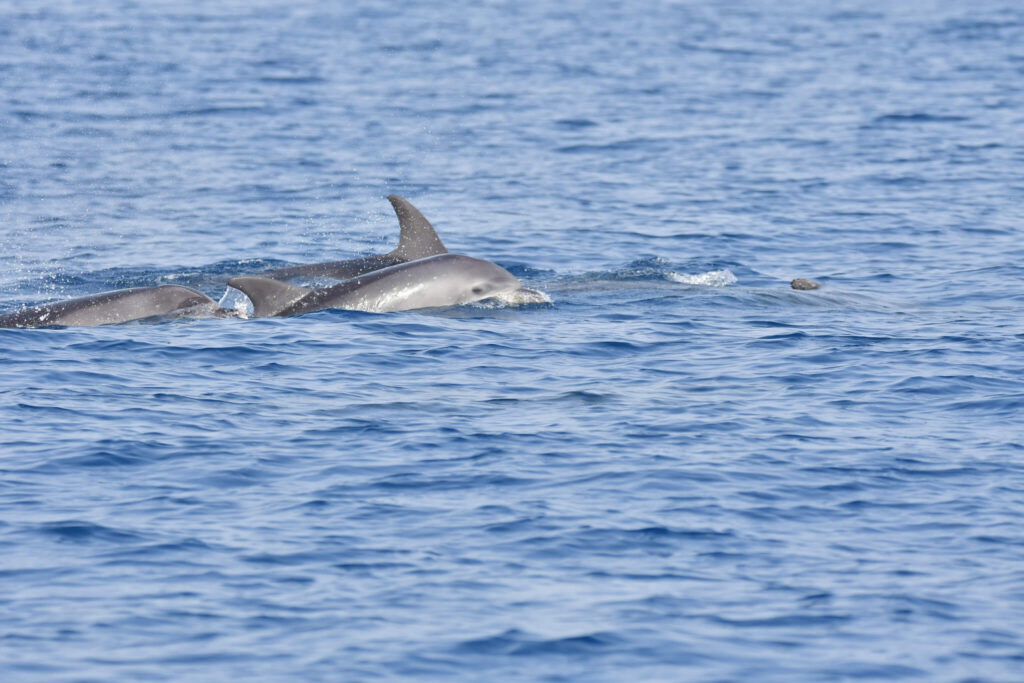
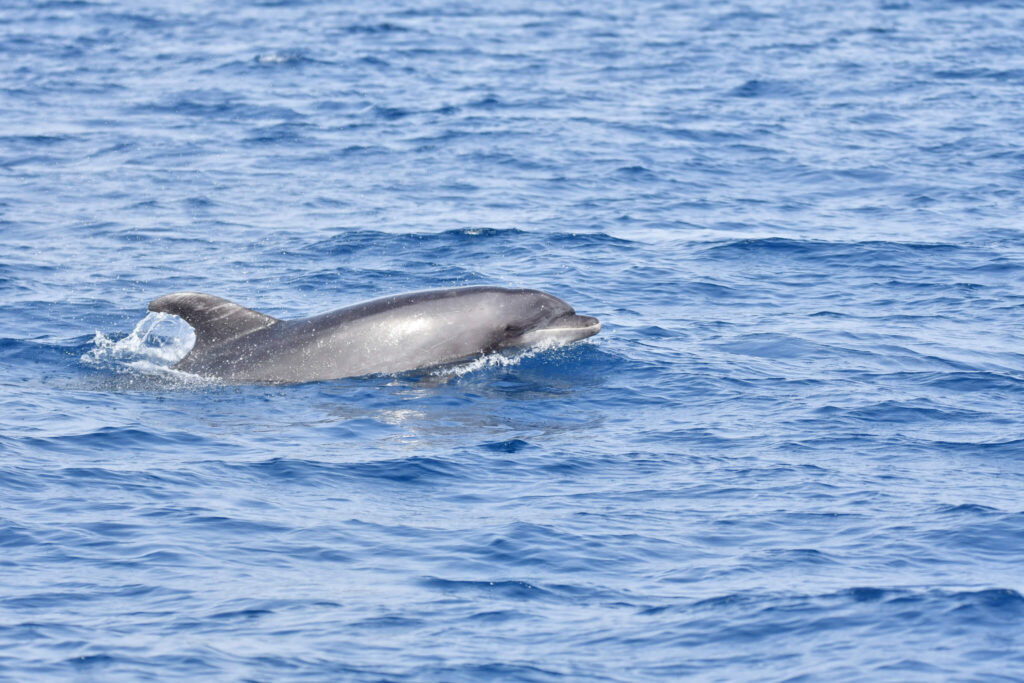


During the cruise, I of course kept an eye out for seabirds as well, but apart from a few Scopoli’s shearwaters and several gull species that can also be seen from land, I didn’t spot anything particularly interesting. Nonetheless, it was still worth spending those 250 euros for a cruise for two people.
Birds on Fuerteventura
I saw interesting birdlife in almost all the places we visited. The biggest disappointment was the desert Parque Natural de Corralejo. Although the park only has one trail you can follow, it is completely trampled by tourists. This is probably because the trail is almost unmarked, making it very easy to stray from it. Despite my diligent search, I was unable to find the Saharan hubara or the cream-colored courser that I was hoping for.

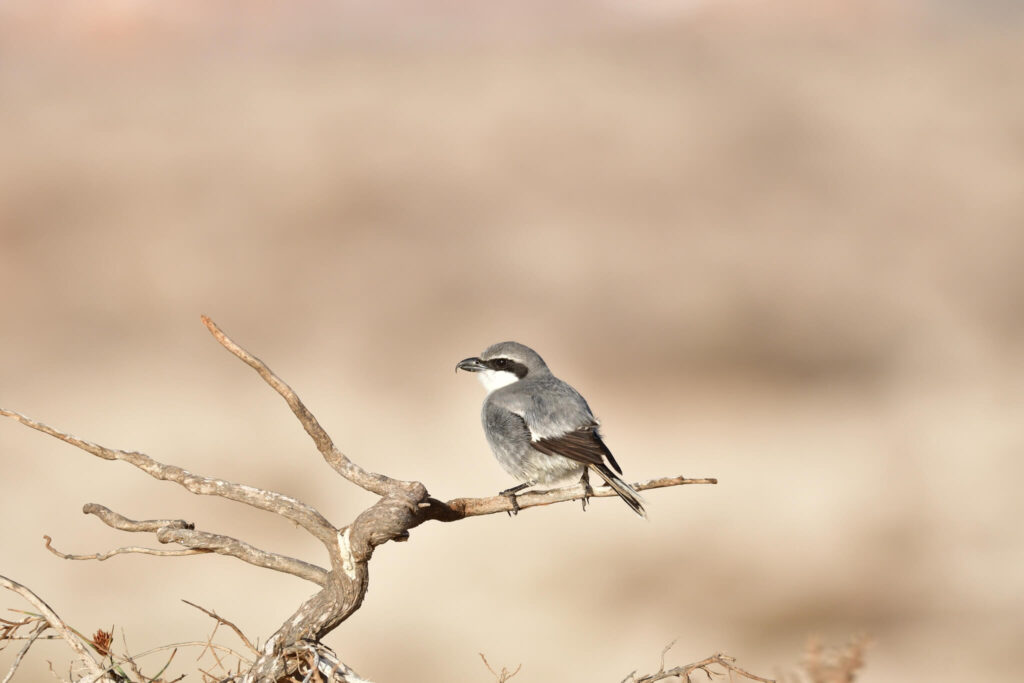
Visiting the zoo turned out to be a very good idea for birdwatching. The wild birds took full advantage of the water and food provided by the zoo for its animals. I only included in my life list the birds that were not residents of the zoo, so despite observing the marabou stork and the saddle-billed stork, they do not make it onto my list.



Undoubtedly, I was incredibly lucky during this trip. An african blue tit literally visited us during breakfast in Esquinzo, a cream-colored courser miraculously appeared in one of my photos but was blurred like a mirage, and I only managed to find the Saharan hubara six hours before our flight home.
In the end, I added 20 new species to my life list.

Complete list of sightings
Below is the list of bird species observed during the trip. The first 20 are the species I saw for the first time.
- Red-vented bulbul
- Scopoli’s shearwater
- Trumpeter finch
- Barbary partridge
- Houbara bustard
- Hadada ibis
- African sacred ibis
- Red-rumped swallow
- Plain Swift
- Ruddy shelduck
- Fuerteventura Stonechat
- Monk parakeet
- African blue tit
- Muscovy duck
- Sardinian warbler
- Spectacled warbler
- Cream-colored courser
- Berthelot’s pipit
- African Collared-Dove
- Spanish sparrow
- Eurasian collared dove
- Common ringed plover
- Kentish plover
- Eurasian whimbrel
- Sanderling
- Common sandpiper
- Yellow-legged gull
- Lesser black-backed gull
- Sandwich tern
- Black-crowned night heron
- Little egret
- Western cattle egret
- Grey heron
- Eurasian spoonbill
- Eurasian hoopoe
- Egyptian vulture
- Common kestrel
- Peregrine falcon
- Rose-ringed parakeet
- Great grey shrike
- Common raven
- Greater short-toed lark
- Common linnet
- Ruddy turnstone
- Grey plover
- Barn swallow
- Western house martin
- Willow warbler
- Mediterranean short-toed lark
- Mallard
- Black-winged stilt
- Northern wheatear
- House sparrow













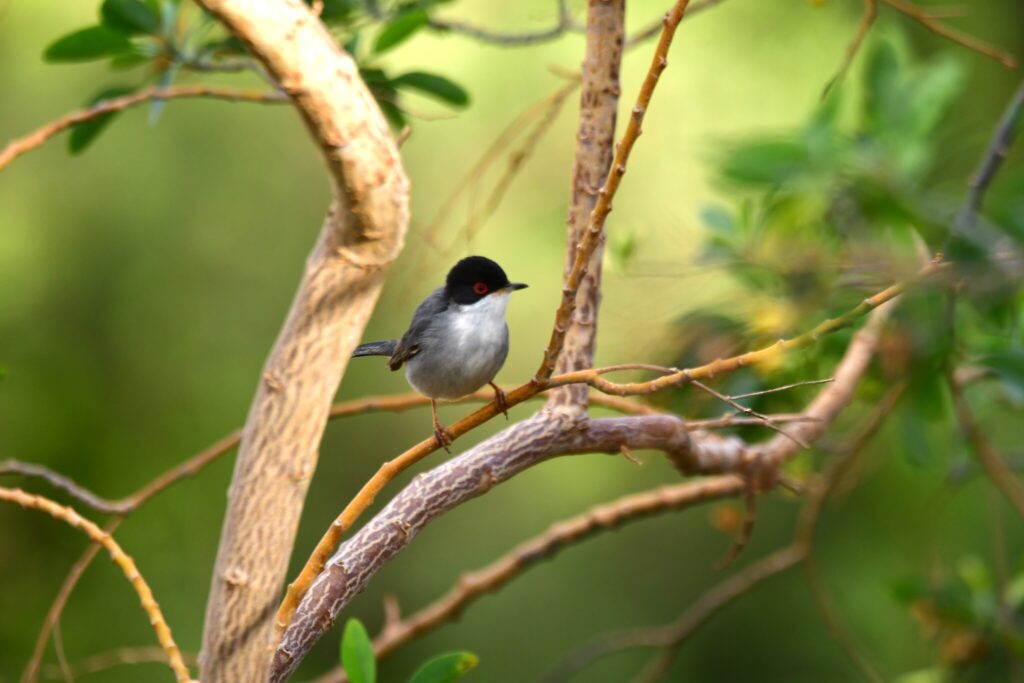




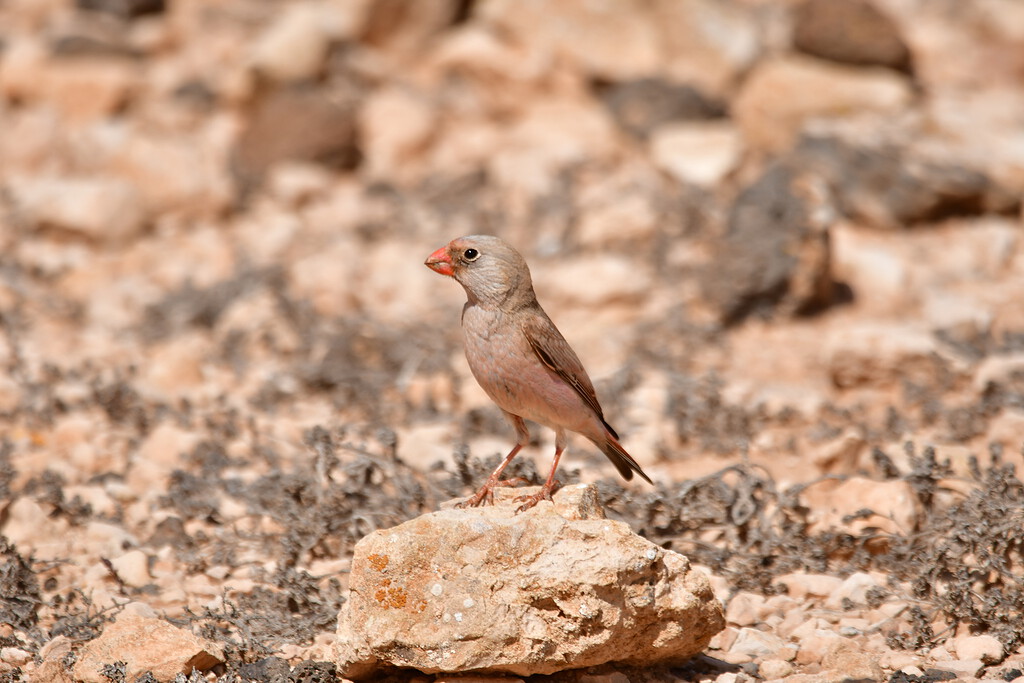

Trip summary
Basically, every aspect of our trip to Fuerteventura went smoothly. We had no issues with transportation, the car rental turned out to be cheaper than expected, and both accommodations were very comfortable and managed by friendly hosts. We didn’t encounter anything that would dampen our spirits, and as a bonus, we got an unexpected carnival party.
There were no unforeseen expenses, so we could afford some extra spending, and we still wrapped up the trip under our planned budget of 7000 PLN for a week’s stay for two. I sincerely recommend it to anyone who hasn’t been there yet, as we came back with only positive memories.
Useful tips

- UV Protection: Sunscreen and hats or caps are an absolute must. If you’re heading out for birdwatching in the desert, I also recommend bringing lip balm. The strong, hot wind can dry out your lips quickly, causing them to crack and bleed. Don’t ask me how I know.
- Car Rental: It’s best to book with a local company like CICAR. We reserved with another company and ended up paying a bit more.
- Beach Etiquette: Be aware that you’ll encounter many nudists, mostly retirees, on the beaches.
- Souvenirs: Do not take souvenirs without a receipt. Items like shells, sand, and basalt rock fragments are protected, and trying to remove them can result in severe penalties.
- Accommodation: Check on the status of the sewage system when booking your stay, as there are regular issues on the island. Fortunately, we managed to avoid this problem.
- Shopping: Avoid buying souvenirs in Morro Jable as prices there can be up to 20% higher.
- Oasis Park: If you’re planning to visit Oasis Park, allocate a full day for it. The zoo is truly vast.
- Additional Activities: Inquire at your hotel or apartment about discounts for additional attractions. They often have affiliations and can offer reduced prices.
- Language: Fuerteventura surprised us with how widely English is spoken. It was quite different from our experience in Catalonia. A English – Spanish dictionary won’t be necessary.
- Seafood: Make sure to try seafood dishes at one of the restaurants on the Corralejo waterfront. Delicious!
- Grocery Shopping: If your accommodation doesn’t offer full board, shop for groceries at Lidl or Mercadona. Prices are lower there than elsewhere, and Lidl stocks almost the same products as in Poland. Mercadona has a good selection of local products.
- Street Vendors: You’re unlikely to encounter street vendors and hustlers.
- Duty-Free Zone: Fuerteventura, as part of the Canary Islands’ duty-free Special Zone, offers lower taxes on certain products. I bought perfumes there for half the price compared to Poland. You can indulge, but remember to keep within airline baggage limits.

Bibliography and footnotes
- UNESCO – https://www.unesco.org/en/mab/fuerteventura
- https://www.spain.info/pl/natura/rezerwat-biosfery-wyspa-mares-fuerteventura/
- https://teneryfyczas.com/zakupy/
